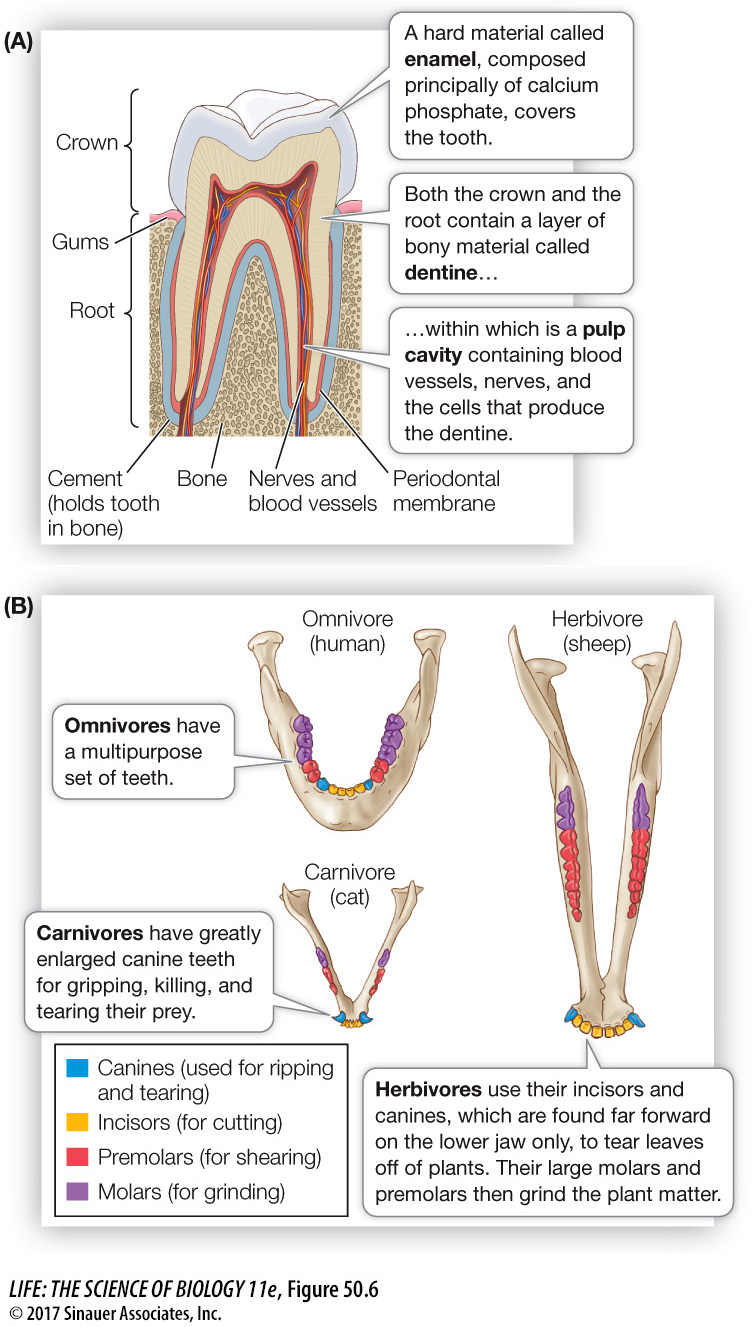Vertebrate species have distinctive teeth
Teeth are adapted for the acquisition and initial processing of specific types of foods. Because they are among the hardest structures of the body, an animal’s teeth remain in the environment long after it dies. Paleontologists use teeth to identify animals that lived in the distant past and to deduce their feeding behavior.
In general, teeth of all vertebrates have the same, three-

Activity 50.3 Mammalian Teeth
www.life11e.com/
There is a great deal of homology in the dentition of mammals, but the shapes and organization of mammalian teeth are adaptations to different diets (Figure 50.6B). In general, incisors are used for cutting, chopping, and gnawing; canines are used for stabbing, gripping, and ripping; and molars and premolars (the cheek teeth) are used for shearing, crushing, and grinding. The highly varied diet of humans is reflected in our multipurpose set of teeth, as is common among omnivores.